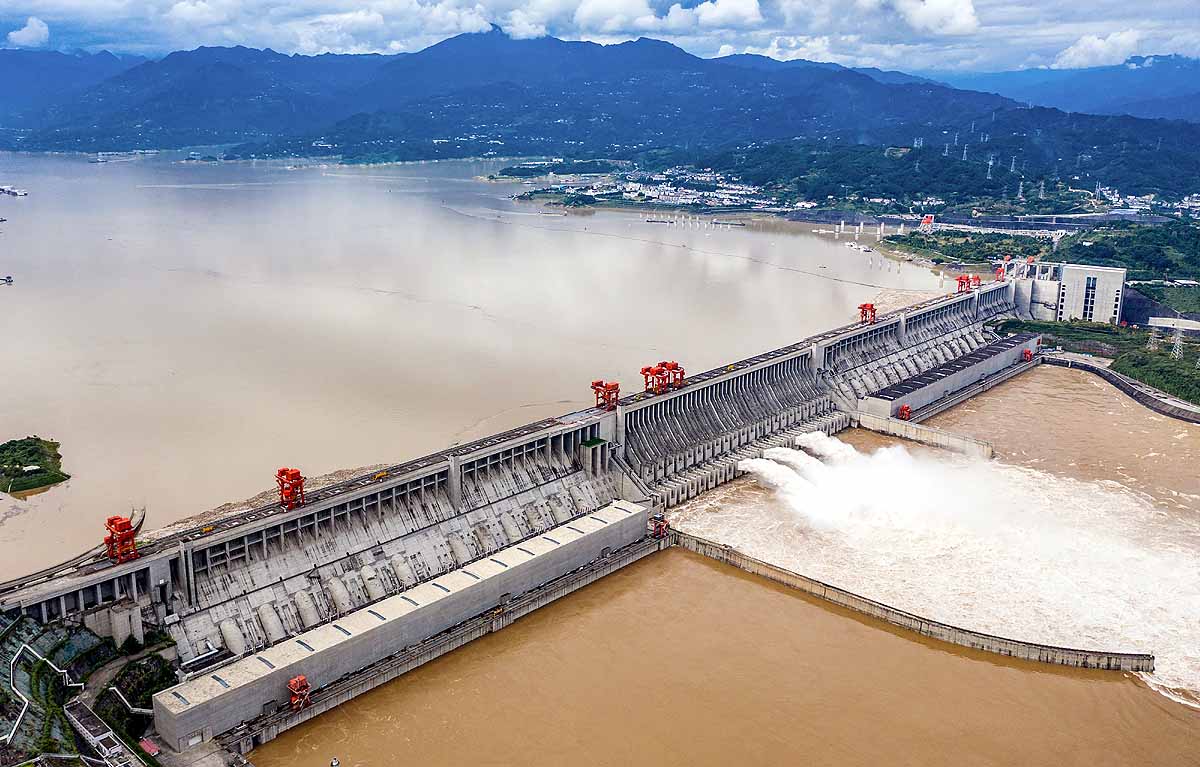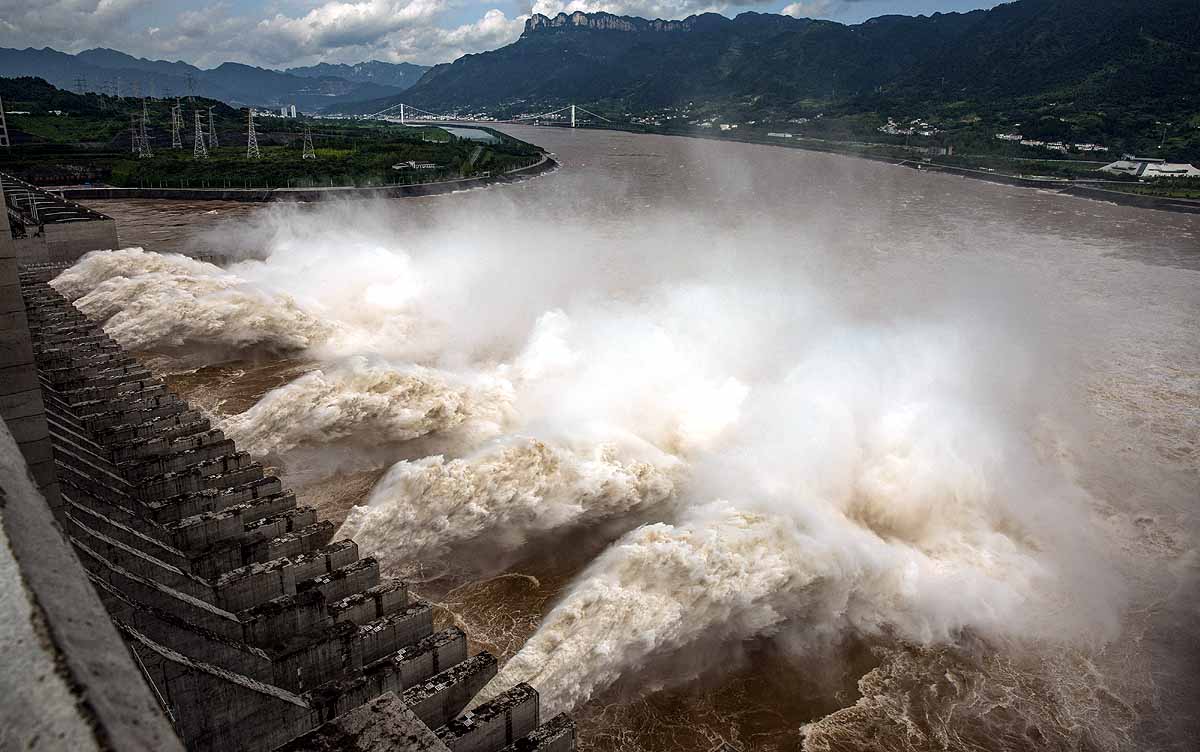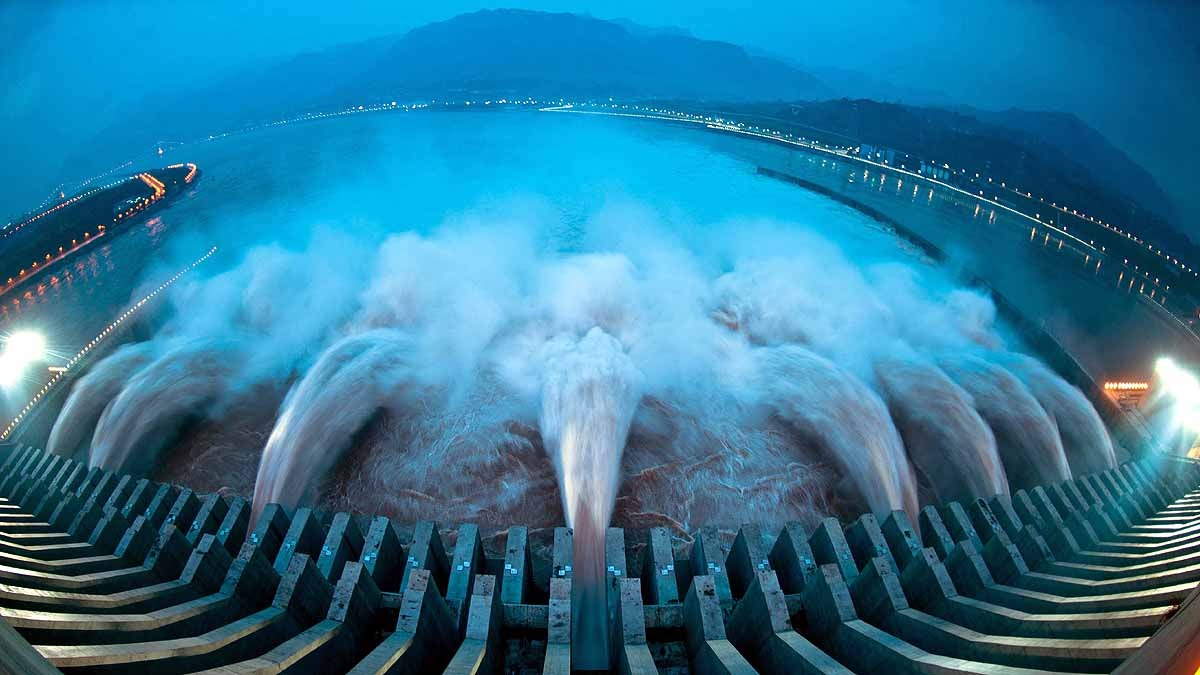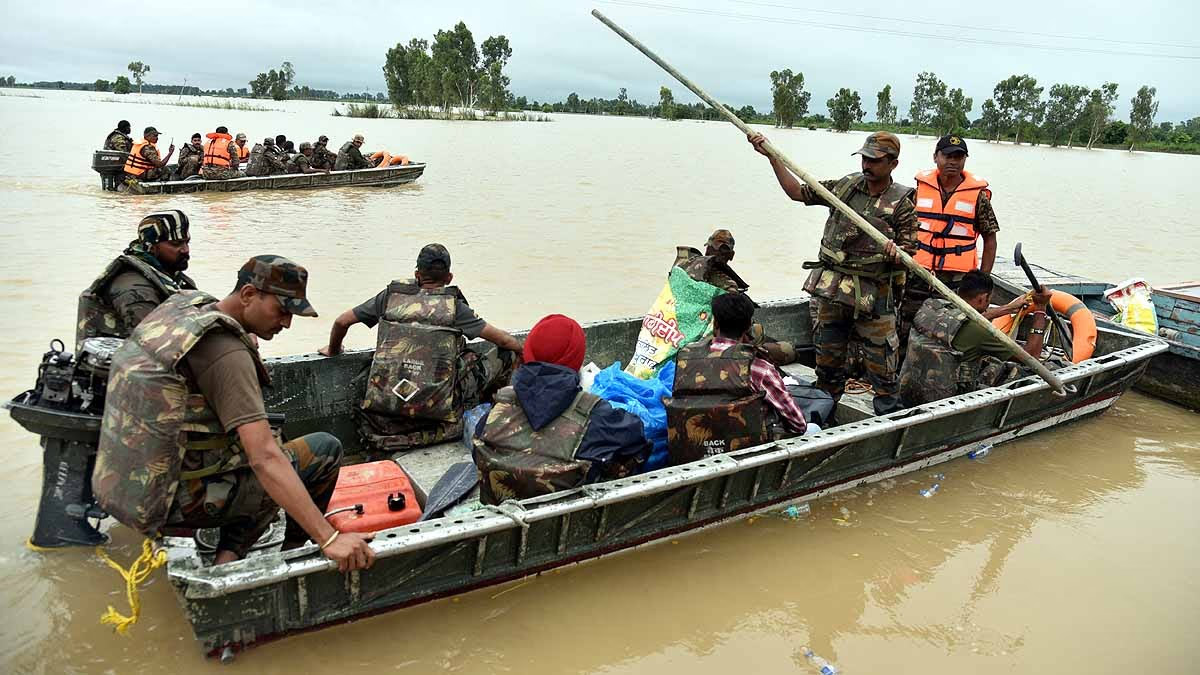Monsoons bring rising river levels, underscoring the significance of dams. Without them, waters invade residential areas. Dams are beneficial in preventing floods and generating electricity. Yet, there's one that's a hotbed of controversy, known for being the world's largest.
The Three Gorges Dam in China is astonishing in its impact, having even slowed the Earth's rotation. This behemoth, a hydroelectric gravity dam, is the subject of heated debates.
Located in China's Hubei province on the Yangtzie River, the third-longest river globally at over six thousand kilometers, its flood history is devastating, with floods every decade and nearly 300,000 lives lost in the 20th century alone.

Source: aajtak
Vast in Size, Height, and Cost
The dam was constructed to control floods and protect millions of lives and agricultural land. Spanning 2.3 km, 115 meters wide, and 185 meters tall, its massive build and high cost—estimated over 250 billion Rupees—echo its grandeur. Construction began in 1994 and concluded in 2012.
Thousands of Tons of Steel Utilized
A staggering 463,000 tons of steel went into the Three Gorges Dam, enough to erect 60 Eiffel Towers. It generates power to light up several small nations, with a 22,400-megawatt capacity.
The Controversy Surrounding the Dam
Despite China's claims of success in controlling floodwaters, the dam faces scrutiny over water pollution and environmental threats. China still battles severe rainfall and floods, raising questions about the dam's efficiency.
Landslides and Flood Impact
There were warnings from scientists in 1992 that the dam could increase pressure on nearby islands, prompting landslides and threatening biodiversity. Indeed, a 700 million cubic foot rockslide into the Qinggan River in 2003 tragically claimed 14 lives. Subsequently, the corporation overseeing the dam raised its reservoir levels from 445 to 512 feet, sparking numerous landslides. Enormous flood waves in 2020, indicative of a flash flood, again tested the dam's capacity, with ongoing struggles against Yangtze River floods ever since.

Source: aajtak
The floods have resulted in hundreds of fatalities across various regions in China, displacing over 1.4 million people, destroying homes, and inundating acres of farmland. Over a hundred towns and 1600 villages along the Yangtze River banks were submerged.
The weight of the water wreaked havoc on crucial stretches along the Yangtze River banks, bringing the dam's efficiency into question. While experts believe it can withstand minor floods, major floods pose a significant challenge.
The Dam's Associated Harms
Built atop two significant fault lines, the dam is prone to earthquakes. In 2003, a large segment of a mountain collapsed into the river, resulting in 24 deaths. The dam's integrity has been questioned due to cracks and potential leaks.
In the surrounding areas of the Three Gorges Dam, more than 6400 plant species, 3400 insect species, 300 fish species, and over 500 land vertebrate species have been put at risk due to the dam. More so, the dam is increasing droughts and diseases.

Source: aajtak
Especially concerning was the Yangtze River's lowest water level in 2008 over 142 years, affecting homes and leading to water pollution. Estimates suggest 70% of China's freshwater is contaminated, further exacerbated by the dam's location over old Waste Facilities and Mining Operations, with an annual accumulation of 265 million gallons of sewage.
Affecting Earth's Rotation
The dam's most profound impact is on Earth itself. NASA scientists computed in 2005 that the Three Gorges Dam has indeed slowed the planet's rotation. Many factors can influence this, like winds, earthquakes, climate changes, and even the Moon's gravitational pull. Holding 42 billion tons of water, the dam affects Earth's momentum while rotating.
Mass redistribution has extended a day by 0.06 microseconds. Hence, each day is now slightly longer due to the dam. According to NASA, the dam's construction has shifted the North and South Poles by 2 centimeters each, tapering the planet slightly at the poles.




